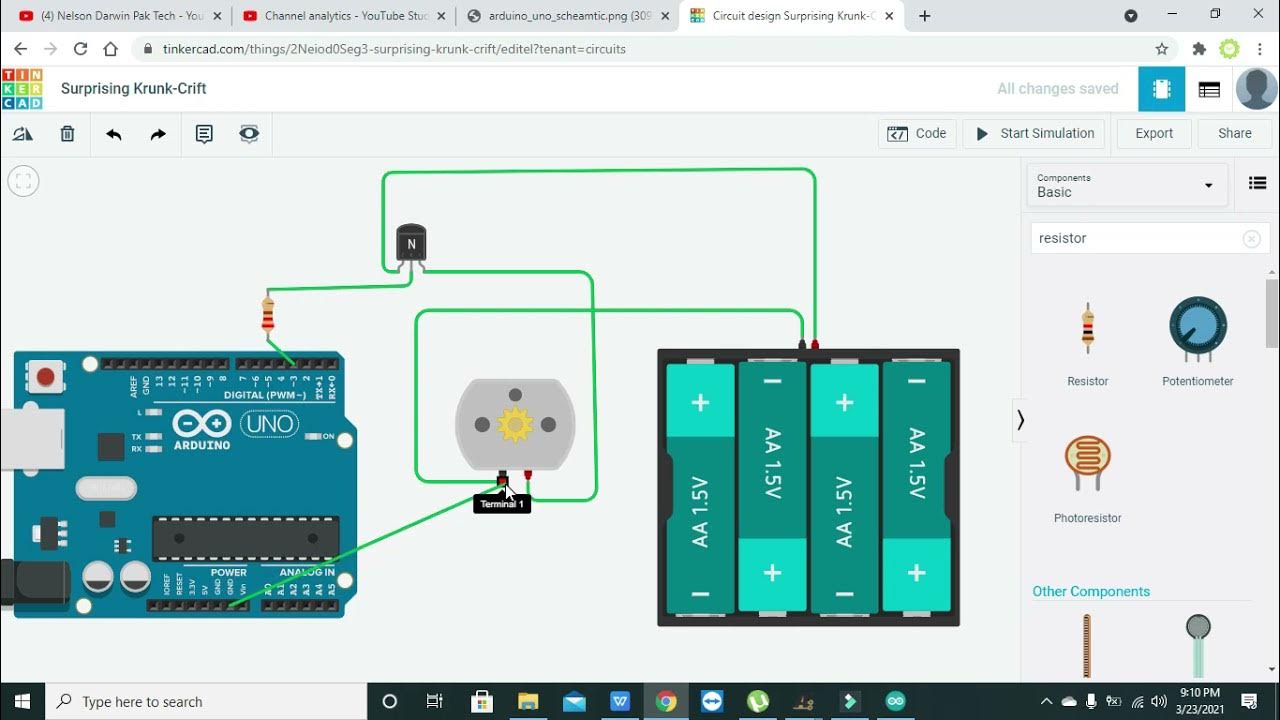PLTS | Part 3 [Memilih Solar Charge Yang Tepat]
Summary
TLDRThis video compares two types of Solar Charge Controllers (SCC): PWM (Pulse Width Modulation) and MPPT (Maximum Power Point Tracking). It explains the operational differences, including how PWM adjusts voltage to match battery voltage, while MPPT optimizes power transfer by converting excess voltage into increased current. The video outlines the efficiency, cost, and ideal use cases for each type of SCC, emphasizing that PWM is cost-effective for smaller systems, while MPPT is more efficient for larger systems. Ultimately, the choice depends on the solar system's size and specific needs.
Takeaways
- 😀 PWM (Pulse Width Modulation) and MPPT (Maximum Power Point Tracking) are two types of solar charge controllers (SCC) that differ in technology and efficiency.
- 😀 PWM works by adjusting the voltage to match the battery voltage, while MPPT tracks and converts excess voltage into higher current to maximize power.
- 😀 The voltage output from a PWM controller matches the battery voltage, reducing the system's overall efficiency, especially with larger solar setups.
- 😀 MPPT, on the other hand, converts excess voltage into current, maintaining battery voltage but significantly increasing the charging current for better efficiency.
- 😀 A solar panel's maximum output (e.g., 250Wp) is typically higher than the battery's voltage, and MPPT controllers are designed to handle such differences effectively.
- 😀 PWM is more suitable for smaller solar systems (10Wp to 200Wp), offering an affordable solution for users with low power needs.
- 😀 MPPT controllers are more suitable for larger systems (above 200Wp) as they maximize energy extraction and improve overall system performance.
- 😀 The efficiency of MPPT controllers is much higher than PWM, especially when there is a significant difference between the panel voltage and the battery voltage.
- 😀 While PWM controllers are more affordable, MPPT controllers come at a higher cost, but the price difference is justified for larger systems due to their higher efficiency.
- 😀 The choice between PWM and MPPT depends on factors like solar panel voltage relative to battery voltage and the size of the solar system, with MPPT being more effective in systems with higher power output.
Q & A
What is the main difference between PWM and MPPT in solar charge controllers?
-The main difference between PWM and MPPT lies in the way they handle voltage and current. PWM adjusts the voltage to match the battery’s voltage, which may result in power loss, while MPPT optimizes the conversion of excess voltage into additional current, improving charging efficiency.
How does PWM work in solar charge controllers?
-PWM uses Pulse Width Modulation to adjust the width of voltage pulses to match the battery's voltage, leading to a reduction in voltage to fit the battery’s required level.
What is the role of MPPT in solar charge controllers?
-MPPT, or Maximum Power Point Tracking, finds the optimal voltage and current for charging the battery by converting excess voltage into higher current, ensuring more efficient energy transfer from the solar panel to the battery.
What happens when using PWM with a solar panel that generates 32V?
-When using PWM, the voltage from a 32V solar panel is reduced to match the 12V battery voltage. The current is not increased, resulting in less power transferred to the battery.
How does MPPT handle a solar panel that generates 32V?
-With MPPT, the excess voltage generated by the solar panel is converted into additional current, so the voltage remains at 12V, but the current is increased, allowing for more power to be transferred to the battery.
Which type of charge controller is recommended for small solar panel systems?
-PWM is recommended for smaller solar panel systems, typically those with capacities between 10W to 200W, as it is more cost-effective and sufficient for such systems.
When should MPPT be used instead of PWM?
-MPPT should be used for solar systems with larger capacities, especially when the solar panel voltage is higher than the battery voltage. It is more efficient at converting excess voltage into usable power for the battery.
What are the efficiency differences between PWM and MPPT?
-MPPT is more efficient than PWM because it optimizes the use of excess voltage, converting it into higher current for better energy storage, while PWM only adjusts the voltage to match the battery's requirements without utilizing excess energy effectively.
What factors should be considered when choosing between PWM and MPPT?
-Key factors include the voltage of the solar panel relative to the battery voltage, the solar panel's capacity, and the cost. PWM is suitable for systems with lower capacity and matching voltages, while MPPT is better for larger systems with higher panel voltages.
How does the cost of MPPT and PWM compare?
-MPPT charge controllers are more expensive than PWM controllers due to their higher efficiency and ability to handle larger systems with higher panel voltages.
Outlines

This section is available to paid users only. Please upgrade to access this part.
Upgrade NowMindmap

This section is available to paid users only. Please upgrade to access this part.
Upgrade NowKeywords

This section is available to paid users only. Please upgrade to access this part.
Upgrade NowHighlights

This section is available to paid users only. Please upgrade to access this part.
Upgrade NowTranscripts

This section is available to paid users only. Please upgrade to access this part.
Upgrade NowBrowse More Related Video

Penjelasan tentang Modulasi PWM dan Modulasi FM Menggunakan Proteus

What is Pulse Width Modulation? How to generate PWM signal ? Pulse Width Modulation Explained

Sound Design Tutorial - Subtractive Synthesis

Inverters, How do they work?

Sisdig pertemuan 6

motor speed controller with arduino in tinkercad | motor speed controller with PWM in tinkercad
5.0 / 5 (0 votes)